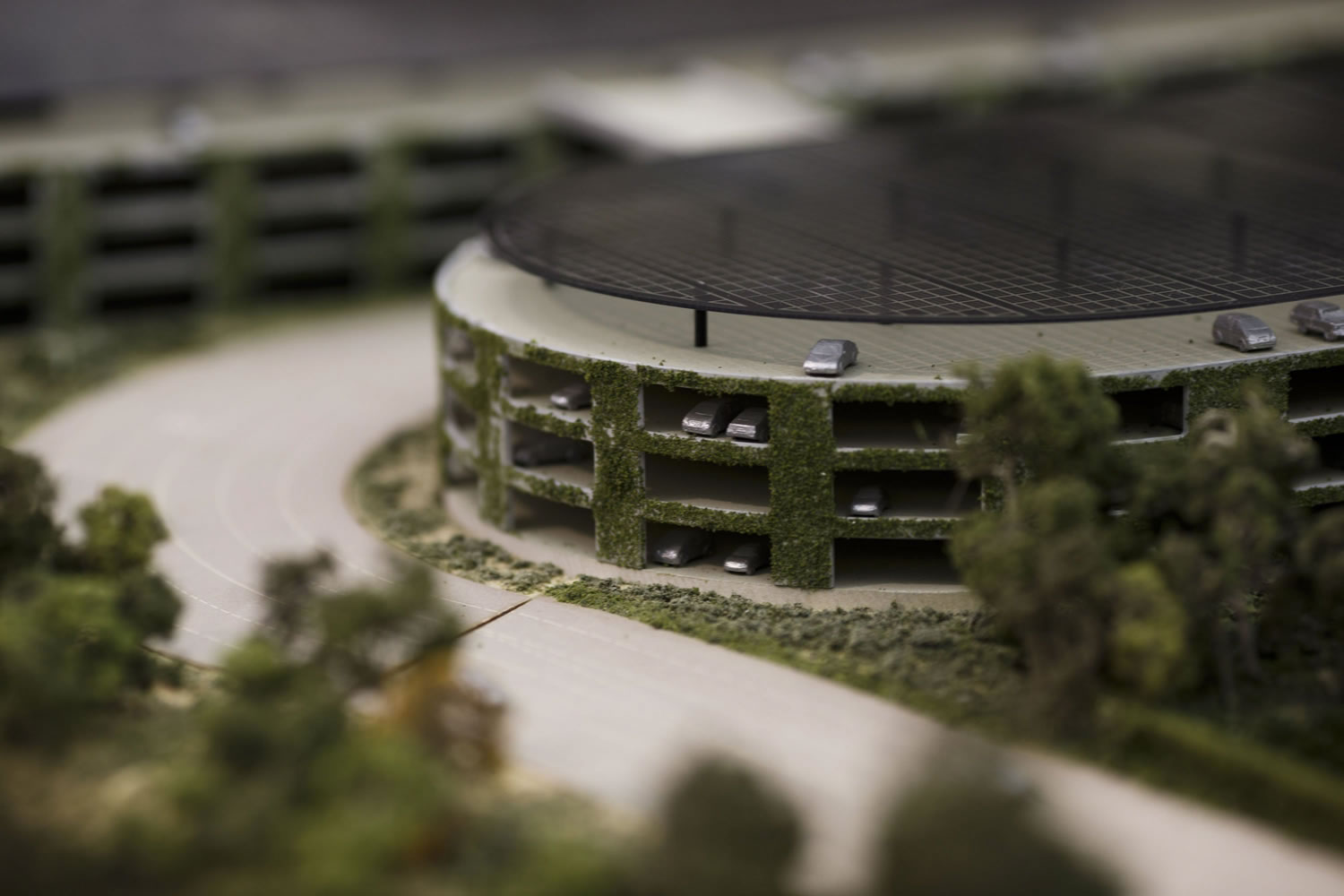Apple Inc.’s Peter Oppenheimer, the baby-faced high priest of finance for the world’s most valuable company, gazed up at the oversized map on the wall.
“Let me begin by showing you the sea of asphalt,” Apple’s chief financial officer said, pointing to the abandoned husk of Hewlett-Packard’s former Cupertino, Calif., campus, the site of Apple’s proposed new spaceship-shaped headquarters that was approved by the city council Tuesday. The plan: Flip a 175-acre site that’s now 80 percent asphalt and buildings into one that’s 80 percent open space and parkland, then drop a spectacular ring of polished glass into the middle of it all.
Perhaps channeling his former boss Steve Jobs at one of his high-anticipation product launches, Oppenheimer quickly went into full Apple pitch mode.
“You see the energy and the love and the attention to detail that we’ve put into this,” he told the San Jose Mercury News during a sneak peek of a top-secret, living-room-sized model of the building. “We have treated this project just as we would any Apple product. And this will be a place for the most creative and collaborative teams in the industry to innovate for decades to come.”
All about innovation
Oppenheimer had every right to be gushing. With its jaw-dropping design from architectural superstar Sir Norman Foster and his team, its stellar environmental credentials, and a tax-revenue windfall promised for Cupertino and the region, Apple Campus 2 promises to bring a world-class real-estate project — along with a lot of traffic congestion — to the heart of Silicon Valley.
During a recent and rare 45-minute visit with Oppenheimer, who most often appears publicly as the disembodied voice beside CEO Tim Cook on Apple’s quarterly-earnings conference calls, the message was as crystal clear as Gorilla Glass: this particular Apple product, dreamed up by the late Steve Jobs and massaged with the help of company design guru Jony Ive and the same folks who brought us the iPhone and iPad, is all about green and all about innovation.
“The concept of the building,” said Oppenheimer, “is collaboration and fluidity. It’ll provide a very open-spaced system, so that at one point in the day you may be in offices on one side of the circle and find yourself on the other side later that day.”
He said that urgency for working side by side, much as Jobs and Ive once did, led naturally to the design of the building.
“We found that rectangles or squares or long buildings or buildings with more than four stories would inhibit collaboration,” Oppenheimer said. “We wanted this to be a walkable building, and that’s why we eventually settled on a circle.”
Planet-friendly
Dan Whisenhunt, Apple’s director of real estate and facilities, said that circle has been placed within a greenscape that’s planet-friendly.
In fact, designers have shown an almost obsessive-compulsive take on the project’s ecosystem: a naturally ventilated space with radiant cooling that avoids the need for air conditioning 70 percent of the year; LED lighting and smart-control systems adapted to the site’s microclimate conditions; on-site recycling of all excavated dirt into berms, eliminating dust-heaving trucks rumbling through the neighborhood during the three-year construction expected to begin later this year.
“This will be one of the most environmentally sustainable developments on this scale anywhere in the world,” said Whisenhunt, pointing to the model filling an entire room inside a high-security workshop located in the footprint of the new campus.
“A building like this will use 30 percent less energy than a typical corporate building in the Valley. And that’s 100 percent renewable energy, which is unheard-of on this scale, with most of it produced on-site.”



